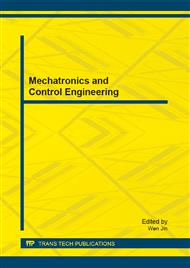p.645
p.651
p.657
p.665
p.670
p.677
p.683
p.687
p.691
An Intelligent Prediction System for Tensile Damage of Woven Fabric Based on Geometrical Modeling
Abstract:
An intelligent prediction system theory-based on geometric modeling is developed in the study. The damage behaviors of woven fabric can be predicted by using the developed prediction system, which is theory-based on finite element analyses (FEAs) approach. A unit cell model based on slice array model (SAM) for plain weave fabric is employed to predict the elastic properties. An unit cell is divided into slices either along or across the loading direction in the SAM to predict the mechanical properties of the fabric. The results show the geometric modeling approach based on SAM is pretty promising in predicting the mechanic properties (e.g., initial Young's modulus, surface shear modulus and Poisson's ratio) of the woven fabric. In the experimental approach, the damage behaviors of plain weave woven fabric are tested under quasi-static conditions and the tensile load-displacement curves of the fabric are obtained and the damage morphologies are also observed. The design of composite can become easier and more efficient by using geometric modeling approach to predict the probable damage due to tensile given to the woven fabric as such an enhancement material.
Info:
Periodical:
Pages:
670-676
Citation:
Online since:
July 2013
Authors:
Price:
Сopyright:
© 2013 Trans Tech Publications Ltd. All Rights Reserved
Share:
Citation:


